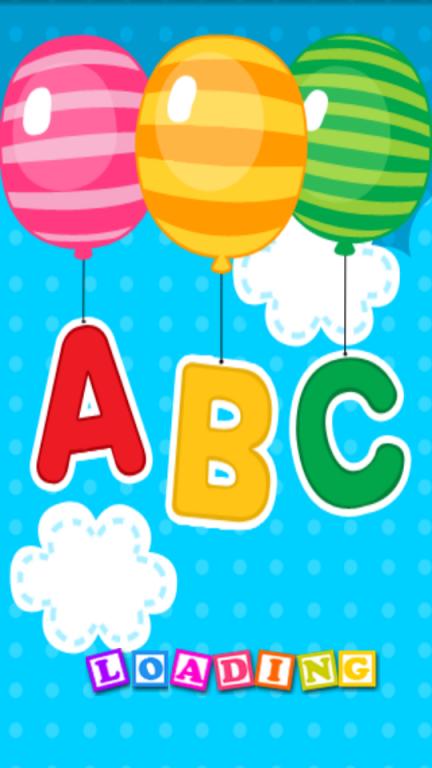今天在网上发现了一个很漂亮的缓冲界面,在这里分享一下。主要还是用的android Anim。
java code:
public class Main extends Activity {
private Animation anm;
private int marginsTop;
public List<ImageView> images;
public LinearLayout ll;
@Override
public void onCreate(Bundle savedInstanceState) {
super.onCreate(savedInstanceState);
getWindow().setFlags(WindowManager.LayoutParams.FLAG_FULLSCREEN, WindowManager.LayoutParams.FLAG_FULLSCREEN);
requestWindowFeature(Window.FEATURE_NO_TITLE);
DisplayMetrics dm = this.getResources().getDisplayMetrics();
int height = dm.heightPixels;
marginsTop = height - 100;
anm = AnimationUtils.loadAnimation(this, R.anim.myanim);
ll = new LinearLayout(this);
ll.setBackgroundResource(R.drawable.background);
images = new ArrayList<ImageView>();
initImage(ll);
playAnimation();
setContentView(ll);
}
private void playAnimation(){
new Thread(){
@Override
public void run()
{
try {
Thread.sleep(1000);
} catch (InterruptedException e) {
e.printStackTrace();
}
int runcount=0;
while(true)
{
if(runcount<2)
{
for(int i=0;i<=6;i++)
{
handler.sendEmptyMessage(i);
try {
Thread.sleep(400);
} catch (InterruptedException e) {
e.printStackTrace();
}
}
runcount++;
}else
{
handler.sendEmptyMessage(99);
runcount=0;
}
}
}
}.start();
}
Handler handler=new Handler(){
@Override
public void handleMessage(Message msg) {
switch(msg.what)
{
case 0:
images.get(0).setImageDrawable(Main.this.getResources().getDrawable(R.drawable.l));
images.get(0).startAnimation(anm);
break;
case 1:
images.get(1).setImageDrawable(Main.this.getResources().getDrawable(R.drawable.o));
images.get(1).startAnimation(anm);
break;
case 2:
images.get(2).setImageDrawable(Main.this.getResources().getDrawable(R.drawable.a));
images.get(2).startAnimation(anm);
break;
case 3:
images.get(3).setImageDrawable(Main.this.getResources().getDrawable(R.drawable.d));
images.get(3).startAnimation(anm);
break;
case 4:
images.get(4).setImageDrawable(Main.this.getResources().getDrawable(R.drawable.i));
images.get(4).startAnimation(anm);
break;
case 5:
images.get(5).setImageDrawable(Main.this.getResources().getDrawable(R.drawable.n));
images.get(5).setAnimation(anm);
break;
case 6:
images.get(6).setImageDrawable(Main.this.getResources().getDrawable(R.drawable.g));
images.get(6).setAnimation(anm);
break;
case 99:
clearImage();
break;
}
}
};
private void clearImage()
{
for(ImageView image:images)
{
image.setImageDrawable(null);
image.destroyDrawingCache();
}
}
private void initImage(LinearLayout layout) {
layout.setGravity(Gravity.CENTER_HORIZONTAL);
LinearLayout.LayoutParams param = new LinearLayout.LayoutParams(40, 40);
param.setMargins(30, marginsTop, 0, 0);
LinearLayout.LayoutParams param2 = new LinearLayout.LayoutParams(40, 40);
param2.setMargins(-5, marginsTop, 0, 0);
ImageView l = new ImageView(this);
l.setLayoutParams(param);
layout.addView(l);
images.add(l);
ImageView o = new ImageView(this);
o.setLayoutParams(param2);
layout.addView(o);
images.add(o);
ImageView a = new ImageView(this);
a.setLayoutParams(param2);
layout.addView(a);
images.add(a);
ImageView d = new ImageView(this);
d.setLayoutParams(param2);
layout.addView(d);
images.add(d);
ImageView i = new ImageView(this);
i.setLayoutParams(param2);
layout.addView(i);
images.add(i);
ImageView n = new ImageView(this);
n.setLayoutParams(param2);
layout.addView(n);
images.add(n);
ImageView g = new ImageView(this);
g.setLayoutParams(param2);
layout.addView(g);
images.add(g);
}
}
anim code:
<?xml version="1.0" encoding="utf-8"?> <set xmlns:android="http://schemas.android.com/apk/res/android" android:shareInterpolator="false"> <scale android:interpolator="@android:anim/accelerate_interpolator" android:fromXScale="0.5" android:toXScale="1.2" android:fromYScale="0.5" android:toYScale="1.2" android:pivotX="50%" android:pivotY="50%" android:fillAfter="false" android:startOffset="-50" android:duration="100" /> </set>

代码地址:http://www.devdiv.com/thread-101608-1-1.html
/*** @author 张兴业
* 邮箱:xy-zhang#163.com
* android开发进阶群:278401545
*
*/